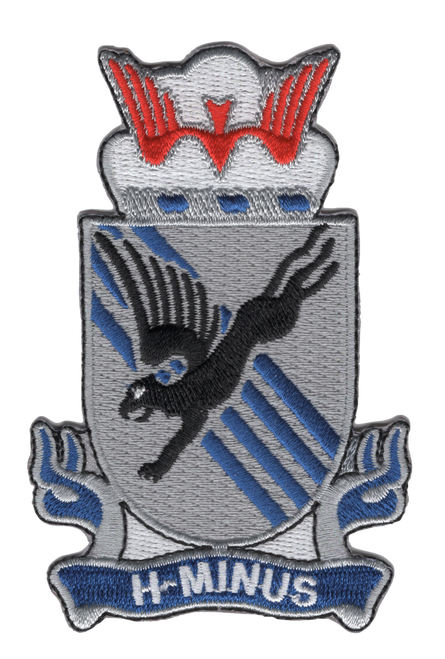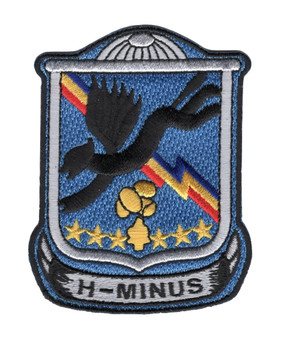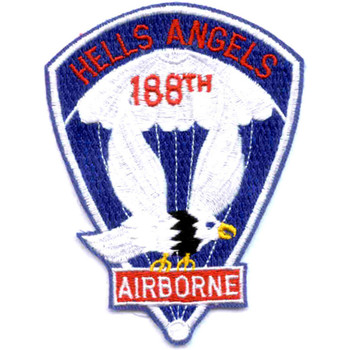Description
505th Airborne Infantry Regiment Patch H-Minus Vietnam (U.S. Army) 2.5" x 3.75" Embroidered Patch with Iron-On Backing
Superior Materials: Made with premium polyester thread and durable twill fabric, ensuring long-lasting color and strength.
Advanced Embroidery Technology: Crafted using the most advanced embroidery machinery, guaranteeing intricate detail, sharp lines, and consistent quality every time.
Easy Iron-On Application: Features a heat-activated adhesive backing for quick, no-sew attachment. Simply position, iron, and press for a secure bond.
Versatile Use: Perfect for personalizing jackets, backpacks, uniforms, or any fabric surface that needs a touch of personality.
Durable and Washable: Designed to withstand everyday wear and occasional washing without fading or fraying.
Formations & Origins
The 505th Parachute Infantry Regiment (PIR), part of the legendary 82nd Airborne Division, has a combat legacy that began in World War II. Activated on July 6, 1942, at Fort Benning, Georgia, the regiment earned fame with jumps into Sicily, Salerno, Normandy, and Holland. Their motto—"H-Minus"—refers to the regiment’s reputation for being ready to deploy not at H-Hour, but a full hour before—H-Minus. It’s not just a motto, it’s a declaration of intent: they’ll be there first, they’ll be in the thick of it, and they’ll be the ones kicking in the door.
When Vietnam came, the 505th didn’t deploy as an entire regiment. Instead, its legacy and components were folded into the 3rd Brigade of the 82nd Airborne Division, which was sent to Vietnam in 1968 during the critical phase of the war. While battalions from the 508th and 504th carried the unit designations, they operated under the 82nd's umbrella—and the 505th’s warrior spirit went with them.
The H-Minus patch, with its winged parachute and red background, remained one of the most respected airborne insignias in the U.S. Army. Though not officially worn in Vietnam by every unit due to reassignment and restructuring, many soldiers continued to claim the 505th as their airborne lineage, and wore the pride of H-Minus in how they fought.
Notable Commanders
By the Vietnam era, the 505th was not operating as a standalone regiment, so its battalion commanders were often operating under the authority of 3rd Brigade leadership. Figures such as Colonel Edwin H. Rooks, who led the brigade during its deployment, carried the responsibility of managing multiple airborne battalions, including those connected to the 505th lineage.
Earlier commanders from the 505th’s storied past still influenced its Vietnam-era paratroopers through tradition, expectations, and training standards. Lieutenant Colonel Benjamin H. Vandervoort, the D-Day commander of the 2nd Battalion, remained an airborne legend whose leadership style was studied and mimicked. These influences were spiritual as much as practical—creating a legacy that every officer and noncom in the airborne wanted to live up to.
Major Campaigns/Operations
Elements of the 82nd Airborne Division’s 3rd Brigade—carrying forward the 505th lineage—arrived in South Vietnam in February 1968. The country was still reeling from the Tet Offensive, the largest coordinated strike by North Vietnamese and Viet Cong forces of the entire war. U.S. forces needed units that could react quickly, deploy with little notice, and hold the line in unstable areas. That’s what brought the airborne in.
One of the first operations involving these units was Operation Carentan, named in honor of the 505th’s ferocious fighting in Normandy. This operation aimed to secure the areas north and west of Saigon, eliminate remaining insurgent forces, and prevent follow-on offensives.
Later missions took the airborne into Bien Hoa, Phu Loi, and Tan Son Nhut Air Base. These were not deep jungle search-and-destroy patrols, but rather high-intensity, urban-edge operations, requiring speed, discipline, and ruthless efficiency. The men of the 505th lineage were tasked with protecting key logistical and transportation hubs, clearing rural hamlets, and running counter-infiltration patrols that operated day and night.
These operations were a different flavor of war than the airborne had seen in Europe or even during early years of Vietnam. Instead of mass drops, they arrived by helicopter. Instead of hedgerows, they fought through alleyways and rice paddies. But the mission was the same: seize, hold, and dominate.
Specialized Role/Equipment
Paratroopers of the 505th were elite by design. Every soldier was airborne qualified, every one had volunteered for a dangerous job. Their identity in Vietnam was shaped more by speed and shock than by stealth. They operated as fast-moving, heliborne infantry capable of jumping into action with short notice and executing complex missions with small units.
They typically carried M16 rifles, M79 grenade launchers, M60 machine guns, claymore mines, and other light weapons suitable for quick maneuver in close quarters. Gear was often modified in the field—jungle boots broken in and sewn up, LBE rigged for personal comfort, helmets painted or camouflaged in the field with spray and sweat.
The real gear, however, was mental: alertness, adaptability, aggression. These troops prided themselves on doing what others couldn’t—hitting hard, holding the line, and moving fast.
Acts of Heroism
Throughout their Vietnam deployment, paratroopers tied to the 505th lineage distinguished themselves in numerous engagements. The unit's aggressive combat posture led to frequent contact with enemy forces, where young sergeants and privates often made the difference in fireteam survival.
In April 1968 near Bien Hoa, a platoon from the 3rd Brigade came under heavy fire during a daylight patrol. A fireteam leader—Sergeant Charles Withers—was credited with charging an enemy machine gun bunker after the initial volley pinned his squad. He cleared the position with grenades and rifle fire, allowing his men to regroup and continue the assault. He was later awarded the Silver Star.
In another mission near Tan Son Nhut, a paratrooper jumped into a canal under fire to pull out a wounded comrade who had been hit by sniper fire. Using his M79 grenade launcher, he laid covering fire from waist-deep water while dragging the man to safety. Acts like this were rarely recorded for the history books, but they lived forever in the memories of those who saw them.
The airborne mentality—move forward, hold fast, never break—produced countless unrecorded stories of valor, many of which still live on in quiet reunions and weathered photographs.
Legacy & Notable Achievements
While the 505th Parachute Infantry Regiment was not deployed as a full unit to Vietnam, its legacy, culture, and men were very much present in every firefight and patrol carried out by the 82nd Airborne Division’s 3rd Brigade. The airborne spirit that had defined the Red Devils in World War II carried over into the Mekong Delta, the rice paddies near Saigon, and the muddy trails outside Phu Loi.
The regiment’s motto, “H-Minus,” was a constant reminder that their job was to be ready first, deploy fastest, and fight hardest. That spirit helped stabilize one of the most politically sensitive and militarily unstable periods of the war. Their discipline, mobility, and combat effectiveness earned respect from allies and fear from enemies.
After Vietnam, the 505th PIR remained a core combat regiment within the 82nd Airborne Division, later deploying to Grenada, Panama, the Persian Gulf, and multiple operations in the Global War on Terror. Its Vietnam-era service may not have had the scale of its WWII campaigns, but it had just as much grit.
They may not have jumped into Vietnam, but they brought the airborne war to its doorstep—and left behind a legacy of fury, precision, and relentless courage.






